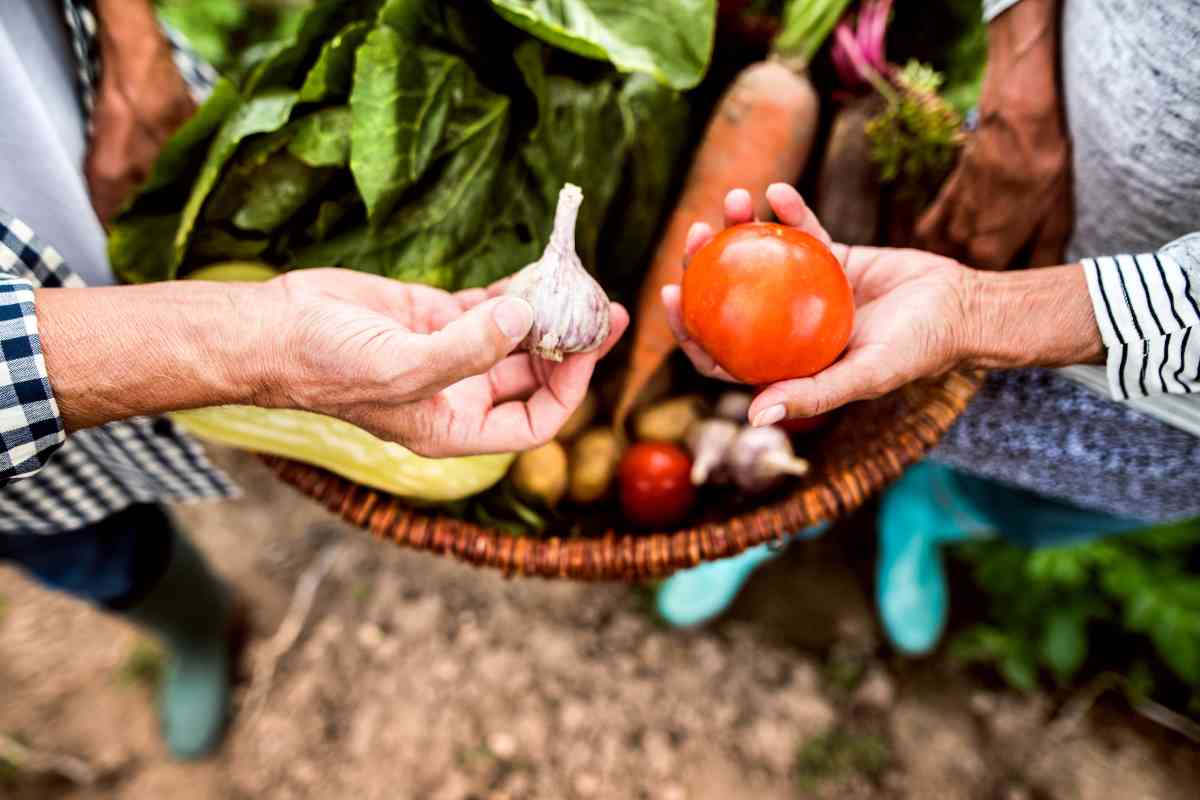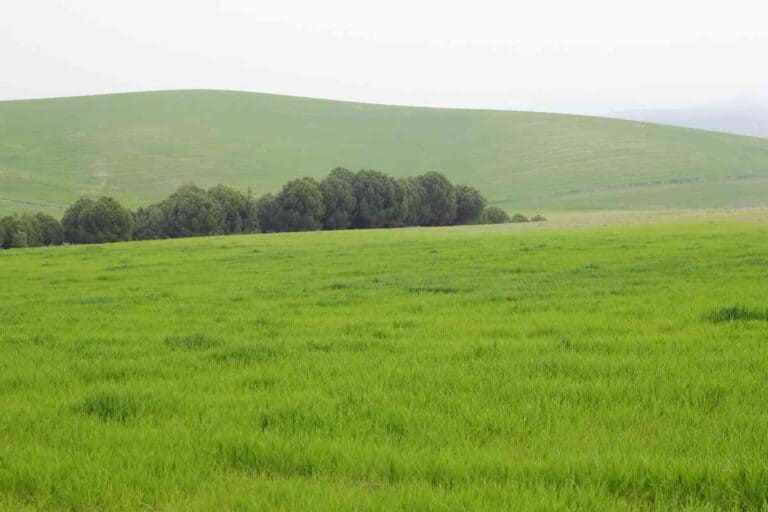How to Start a 1-Acre Farm: Easy Steps for Success
Venturing into small-scale farming on a one-acre plot presents a rewarding pathway toward self-sufficiency and a deeper connection with the earth. This venture demands strategic planning to turn your little slice of heaven into a productive and sustainable farm, capable of yielding a diverse array of crops, supporting livestock, and possibly incorporating aquaculture.

Related Post! How To Make Money On A Half An Acre
How Do I Start A 1 Acre Farm?
To start a one-acre farm, begin with a detailed plan that assesses soil quality, local climate, and water resources. Choose a mix of crops and livestock suited to your conditions and goals. Invest in sustainable practices like renewable energy and efficient water use. Finally, build essential structures and create a budget for financial management.
Success on a one-acre farm hinges on meticulous preparation, understanding the specific needs of your land, and creating a harmonious balance between gardening, animal husbandry, and aquaculture spaces. It’s about leveraging the unique features of your land, informed by its topography and fertility, and marrying that with knowledge of local climate patterns to select crops and livestock that complement each other.
Essential Insights for a Thriving One-Acre Farm
- Holistic Planning: Success depends on a thorough understanding of your land and local climate, ensuring a compatible mix of agriculture activities.
- Diverse Agriculture: Tailoring your crop and livestock choices to your farm’s specific environment boosts productivity.
- Financial and Resource Wisdom: Merging agricultural expertise with savvy financial planning and sustainable practices underpins both passion and profitability.
Deep Dive into Land Mastery
To kickstart your farming adventure, a deep dive into understanding your acre’s characteristics—soil, climate, and optimal configuration—is paramount.
Soil Assessment and Enhancement
The cornerstone of your farm’s bounty lies beneath your feet. Testing your soil reveals its composition and nutritional profile, directing your strategies for enrichment through organic amendments like compost or manure, enhancing its fertility and structure.
Climate Consideration
Your farming strategies must be attuned to the local climate—temperature ranges, precipitation patterns, and frost dates shape your agricultural choices, from crop selection to farm layout planning.
Strategic Farm Layout
Preparing your land involves removing unwanted flora and debris, followed by thoughtful planning of your farm’s layout. This includes allocating space for crops, fencing, and livestock or aquaculture zones, with consideration for sunlight exposure and drainage to promote healthy growth across all farm areas.
Crop Diversity and Rotation
Adopting crop rotation practices not only sustains soil health but also curbs pest populations. Choose a variety of crops that suit your land’s conditions:
- Vegetables: Consider staples like tomatoes, peppers, and leafy greens.
- Fruits: Opt for climate-appropriate fruit trees.
- Grains and Legumes: Explore growing wheat, barley, and beans.
- Root Vegetables: Include nutrient-rich options like carrots, beets, and potatoes.
Water Management
A tailored irrigation plan is vital to meet the hydration needs of your crops, factoring in the weather and specific crop water requirements. Decide on the most efficient irrigation method, whether drip systems, sprinklers, or other techniques, to ensure your plants thrive.
Related Post! How Many Tiny Houses Can You Put On One Acre?

Animal Husbandry and Livestock Management
Embarking on the journey of managing a one-acre farm involves strategic livestock selection, effective pasture management, and constructing suitable farm infrastructure.
Choosing the Right Livestock
Picking the right livestock is crucial for the success of your small-scale farm. Goats and chickens are ideal for their adaptability and dual-purpose benefits, providing meat, dairy, or eggs. Other animals like sheep and pigs also offer value through wool and meat. Key considerations include:
- Egg Production: Rhode Island Red or Sussex chickens for reliable egg yields.
- Meat and Eggs: Plymouth Rock chickens for dual-purpose benefits.
- Dairy Production: A dairy cow, if space permits, for a steady milk supply.
Pasture Management
Effective grazing management is essential to prevent overgrazing and sustain your land. Key strategies include:
- Secure Fencing: Essential for protecting livestock and managing grazing areas.
- Rotational Grazing: Implementing a system to rotate animals, promoting grass regrowth and land health.
Poultry Farming
Chickens are a perfect choice for small farms, offering quick returns on investment through egg and meat production. Essential structures for poultry include:
- Chicken Coop: Designed with adequate space and nesting boxes.
- Chicken Tractor: A movable coop that aids in pest control and fertilization.
Farm Infrastructure
Adequate structures are necessary for housing livestock, storing supplies, and protecting equipment:
- Barns and Sheds: For animal shelter and hay storage.
- Pens: To manage and separate different livestock groups.
- Storage Sheds: For securely storing tools and feed.
Related Post! How To Make Land Pay For Itself

Gardening and Crop Cultivation
The success of your farm’s garden is pivotal, requiring a mix of vegetables, fruits, and grains that contribute to soil health and enhance pollination.
Vegetable Garden Essentials
Choose a diverse range of vegetables suited to your climate, focusing on:
- Root Vegetables: Like carrots and beets, for underground growth.
- Climbing Vegetables: Such as cucumbers and beans, requiring trellises.
Fruit Trees and Berry Bushes
Select climate-hardy fruit trees and berry bushes for your garden, ensuring:
- Fruit Trees: Like apples, pears, and citrus, planted in well-draining soil.
- Berry Bushes: Including strawberries and raspberries, potentially in raised beds to prevent disease.
Grains and Legumes
Incorporate grains and legumes for their nutritional value and soil benefits:
- Grains: Such as corn and wheat, for human and animal consumption.
- Legumes: Like beans and peas, to naturally fertilize the soil by fixing nitrogen.
Attracting Pollinators
Integrate flowers and herbs that attract pollinators, crucial for effective fruit and vegetable pollination:
- Flowers: Such as lavender and sunflowers, to attract bees.
- Herbs: Including basil and mint, beneficial for various pollinators.
Compost System
Develop a compost system to recycle organic waste into nutrient-rich soil, combining green and brown waste for a balanced compost mix. This system supports your garden’s fertility, contributing to the overall sustainability and productivity of your one-acre farm.
Aquaculture and Livestock Diversification
Diversifying your one-acre farm with aquaculture, livestock, and beekeeping can lead to multiple revenue streams, efficient use of space, and an enhancement of your farm’s sustainability.
Raising Fish and Aquatic Livestock
Incorporating aquaculture through a small pond or tank system for species like tilapia, catfish, or trout can boost your farm’s productivity. These fish are resilient, grow fast, and are in high demand. Utilizing aquaponics, where fish waste fertilizes plants that in turn clean the water, creates a symbiotic environment, offering a sustainable source of protein and supporting a balanced ecosystem.
Beekeeping for Crop Pollination and Products
Beekeeping is another avenue for diversification, vital for crop pollination and producing honey and beeswax. This venture requires minimal space and can significantly enhance crop yields, providing an additional income stream from the sale of bee products.
Exploring Small and Alternative Livestock
Considering space limitations, small or alternative livestock such as rabbits, quail, ducks, and geese can be more feasible. These animals are efficient for small-scale farms, providing meat and eggs without requiring the extensive space of larger livestock.
Integrating Livestock with Crop Production
Implementing grazing management and crop rotation with techniques like chicken tractors not only enriches soil health but also aids in pest and weed control. This integration ensures a balanced diet for your livestock and promotes a more productive, healthy farm ecosystem.
Related Post! How To Make Money Off Of 2 Acres Of Land

Financial Planning and Market Strategies
For your farm to be financially sustainable, strategic planning and market analysis are essential. A detailed budget covering both initial and ongoing expenses, understanding your target market, and navigating regulatory landscapes are key factors in ensuring profitability.
Budgeting Essentials
Start with a comprehensive budget that accounts for all costs associated with starting and maintaining your farm. Regularly updating your budget to reflect actual expenses and income will help keep your finances in check.
Marketing and Sales Insights
Knowing your local market demand and developing a strong brand are crucial for selling your produce. Consider direct sales, farmers’ markets, or supplying to local businesses as potential sales channels.
Navigating Regulations
Stay informed about local zoning, health regulations, and certification requirements to ensure your farm operates within legal boundaries. For those interested in organic farming, understanding the certification process is vital.
Value-Added Products for Diversification
Producing value-added products can enhance your farm’s income, offering unique goods that capture your farm’s essence. This approach not only increases revenue but can also provide financial stability throughout the year.
Related Post! Making Money On 5 Acres Of Land
Sustainable Energy and Resource Management
Starting a one-acre farm with a focus on sustainable energy use and efficient resource management is key to its long-term viability and environmental harmony.

Embracing Renewable Energy
Incorporating renewable energy, such as solar power, into your farming practices offers a sustainable and cost-effective solution.
- Site Survey: Begin by assessing the solar potential of your property to identify the best spots for solar panel installation, considering factors like sunlight exposure and shading.
- Energy Assessment: Calculate your farm’s energy needs to determine the size and capacity of the solar panel system required, ensuring it meets your operational demands.
Switching to solar energy reduces dependency on non-renewable energy sources, lowers operational costs, and contributes to a greener farm environment.
Water Conservation Techniques
Given the challenges posed by climate variability, adopting efficient water management practices is crucial for farm sustainability.
- Irrigation Efficiency: Opt for an irrigation system, like drip irrigation, that maximizes water efficiency by delivering water directly to plant roots, significantly reducing wastage.
- Rainwater Harvesting: Implement a system to capture and store rainwater. This not only provides an additional water source during dry periods but also contributes to water conservation efforts.
Adopting these sustainable practices in energy usage and water management not only supports the ecological balance but also ensures the resilience and productivity of your one-acre farm against environmental challenges.





![What Is Mushroom Compost? [Contents, Uses, Pros, and Cons]](https://freedomresidence.com/wp-content/uploads/2022/05/What-Is-Mushroom-Compost-768x512.jpg)
